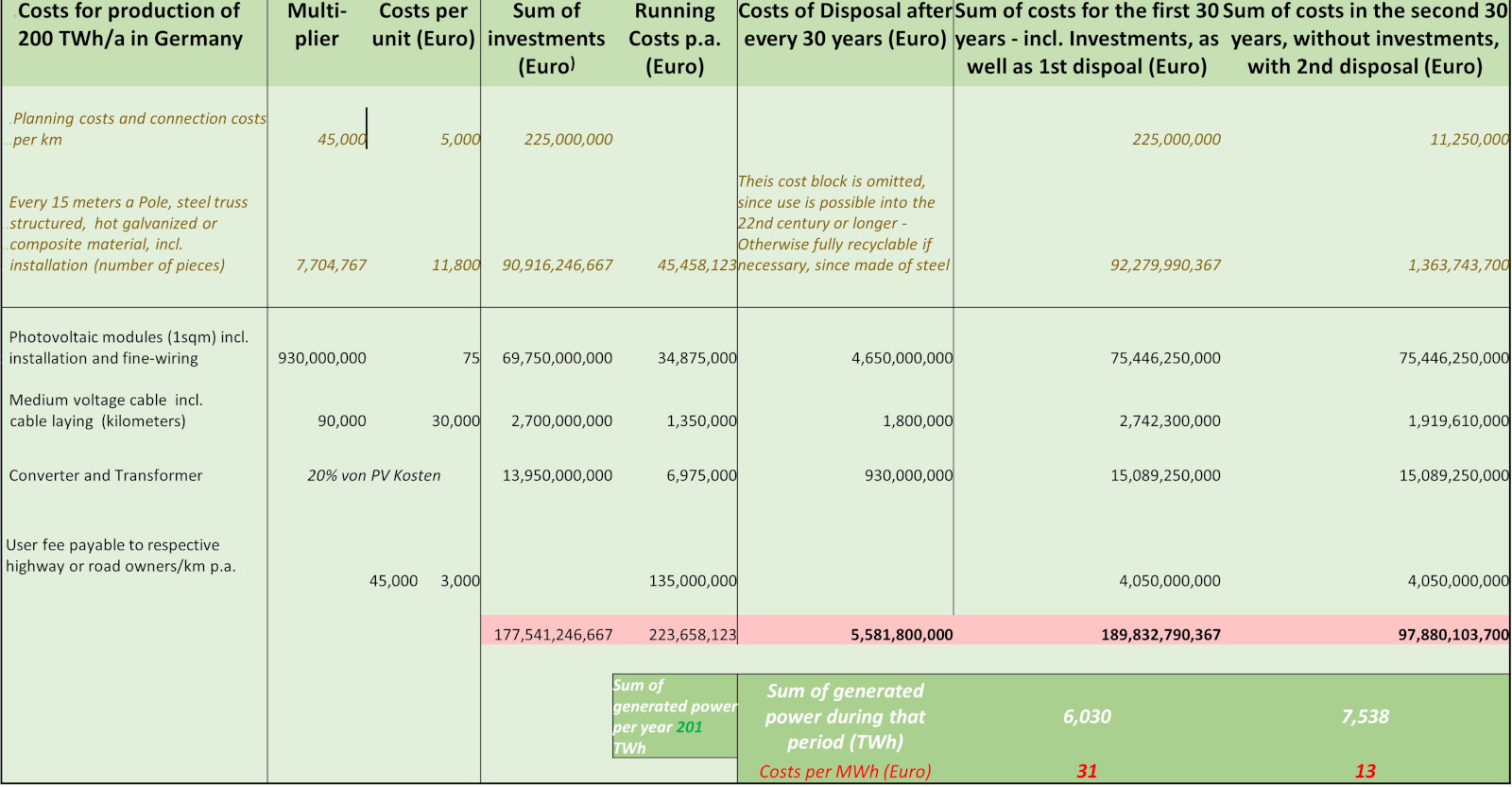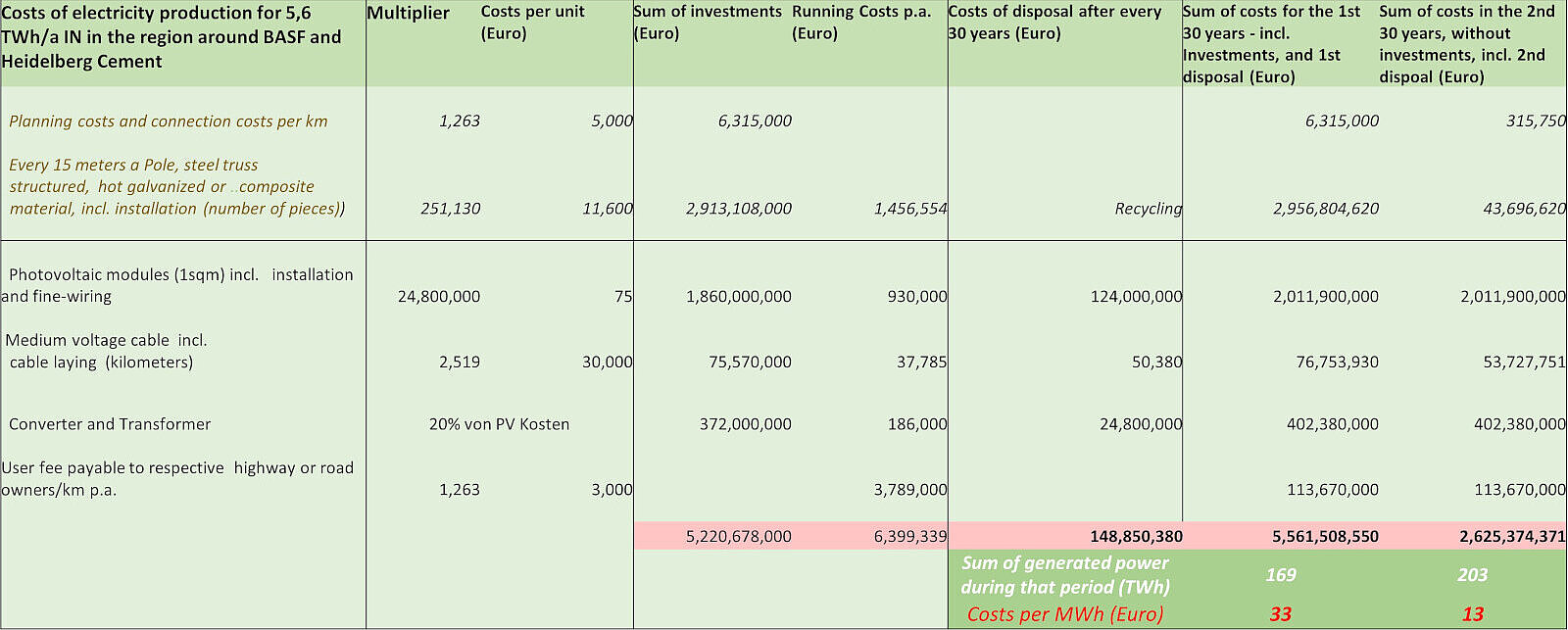Finance
The costs could only be estimated very roughly within the scope of this feasibility study. This is therefore not a business case, but a purely bottom-up addition, supplemented by a delta consideration of the costs of conventional solar parks. Furthermore, the estimates refer to costs after realization of the considerable economies of scale for Germany and not to the initial costs for pilot projects.
A business case would need to include the added value of having Energy Bands running towards or past many consumers during power generation, resulting in volatility balancing of the load profiles they serve along the way, and potentially volatility balancing in generation due to regionally varying weather.
The revenue from this, as well as the resulting significant decrease in storage costs is not yet accounted for in this cost estimate, either.
In addition, there is the added value from the self-amortizing laying of high-current cables, which not only transmit the self-produced electricity of the Energy Bands, but can also collect electricity produced by decentralized smaller third-party generators along their routes and transmit it to consumers or storage facilities - i.e., take a volatile electricity volume for which the conventional grids of the established utilities are not designed.
The same is true of the added value created by co-laying fiber optic cables in the high-current cable ducts: If trenches were to be dug along the highway solely for the power and fiber optic cables, these investments would only be offset by revenues in the very medium and long term. Due to the revenues from the electricity production of the Energy Bands above them, the amortization of the cable installation costs starts immediately after completion of the laying.






